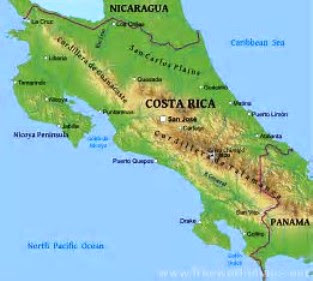According to research
by InternationalLiving.com, political volatility in the U.S. appears to be
motivating expats to look in increasing numbers for overseas retirement havens
that exhibit greater stability.
Costa Rica tops the
list of destinations offering a quiet, steady, and stable political, economic,
and social environment in addition to providing a low cost of living, slow pace
of life, warm weather, and great natural beauty.
“Costa Rica is a
low-drama country—and that appears to be a greater draw today than ever, according
to expats living there,” says Jennifer Stevens, International Living Executive
Editor.
“There’s no lack of
drama in Costa Rica’s landscape, of course—you’ve got jaw-dropping expanses of
coast, jungles rich with everything from spider monkeys and sloths to scarlet
macaws and quetzals, gorgeous lakes and volcanic valleys.
“But the people have a
gentle way about them, the politics are low-key, the character of the place is
warm and welcoming. It feels stable and steady and expats . . . appreciate
finding those traits in Costa Rica.”
Ticos (the moniker
Costa Ricans give themselves) have established one of the world’s most stable
democracies in Costa Rica. The country dissolved its standing army in 1949 and
the reallocated funds are spent on education, healthcare, and pensions instead
of the military.
Costa Rica invests heavily
in education, and as a result, Costa Ricans enjoy a high life expectancy and a literacy rate
approaching 98%. The country regularly wins accolades for its happy lifestyle.
But what many expats
say they appreciate—in addition to the low costs, welcoming people, and
gorgeous landscapes—is how laidback life there is.
This country is one of
the most prosperous and politically stable in Latin America. "At a time
when it seems like nothing but tragic, controversial, and volatile news is
coming out of my home country I am so grateful to have the opportunity to be in
Costa Rica where I feel a bit removed from it all,” says Jackie
Minchillo, IL Costa Rica Coastal Correspondent, who lives on
the Pacific coast.
“Of course, you can't
completely escape the news, thanks to social media, but we're also not
completely inundated here. People spend their mornings and evenings outside
enjoying nature, rather than glued to the television.
“And the talk of the
town here is about Costa Rica's plans to ban single-use plastics, one more step
in the country's commitment to the environment. It's a peaceful place to live,
and we appreciate it especially at times when it seems chaos is driving so many
other places in the world." If this interests you check out International
Living’s comprehensive guide to Costa Rica: Complete Guide to Costa Rica
Information courtesy of InternationalLiving.com.
For 37 years, InternationalLiving.com has been the leading authority for anyone
looking for global retirement or relocation opportunities, travel or investment.
Photos from free sources









































